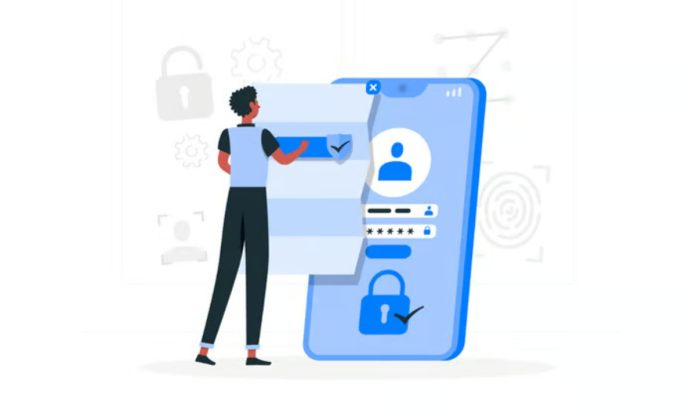In the modern digital age, where financial data security and regulatory compliance are paramount, India has introduced several reforms to streamline customer identification processes across the financial sector. One such initiative is the CKYCRR or Central KYC Records Registry. Despite its significance, many people are still unaware of what a CKYCRR record is, why it is important, and how to use it. This article dives deep into the concept of CKYCRR, explaining its full form, benefits, structure, how to retrieve your CKYCRR number, and answers to frequently asked questions. If you’re engaging with any financial institution in India—be it a bank, insurance company, mutual fund, or NBFC—understanding CKYCRR is essential.
For a foundational overview, read our main article: What is a CKYCRR Record
Table of Contents
What Is CKYCRR? (Full Form & Overview)
CKYCRR stands for Central Know Your Customer Records Registry. It is a centralized repository that stores the KYC (Know Your Customer) information of customers who engage with financial institutions across India. Launched by CERSAI (Central Registry of Securitisation Asset Reconstruction and Security Interest of India) in 2016, this registry is part of the government’s efforts to reduce redundancy, increase transparency, and strengthen the financial compliance ecosystem. When a customer completes a KYC process with any registered financial institution, their details are uploaded to this central registry. A unique 14-digit number, known as the KYC Identification Number (KIN) or CKYCRR Record-Bearing Reference, is then issued to the customer. This number can be used to retrieve KYC data when dealing with other institutions, thus eliminating the need for repeated KYC submissions.
Key Features of CKYCRR
Centralized Storage: All KYC information is stored in one secure location.
Unique Identifier: Customers receive a 14-digit KIN after their KYC is uploaded.
Single Submission: KYC only needs to be done once across all financial services.
Regulatory Compliance: Helps financial institutions comply with PMLA (Prevention of Money Laundering Act) and RBI norms.
Digital Access: Allows easy access and updating of KYC details.
Why CKYCRR Was Introduced
Prior to CKYCRR, customers had to repeat the KYC process each time they opened a new account with a bank, NBFC, insurance firm, or mutual fund company. This not only created a cumbersome experience but also led to duplication and potential security concerns. CKYCRR aims to:
Simplify the customer onboarding process
Enhance customer experience
Prevent money laundering and fraud
Reduce operational costs for institutions
Maintain up-to-date, standardized customer data
How Does the CKYCRR Process Work?
The CKYCRR process is straightforward but involves a few critical steps:
KYC Submission: You submit your KYC details (identity proof, address proof, photo, etc.) to a reporting financial institution.
Verification: The institution verifies your documents and uploads them to the CKYCRR database.
Generation of KIN: Once the data is verified and uploaded, CERSAI issues a 14-digit KYC Identifier (KIN).
Record Sharing: You can use this number for all subsequent financial transactions requiring KYC. For instance, if you’ve opened a savings account at Bank A and received a KIN, you can use that same number to open a fixed deposit at NBFC B without redoing KYC.
Benefits of CKYCRR for Customers and Institutions
For Customers:
Time-Saving: Submit your KYC only once.
Convenient: Use one number across all financial services.
Secure: Data is stored in an encrypted and centralized manner.
Reduced Hassle: No need to carry physical documents repeatedly.
Transparency: Customers can request updates and view their records.
For Institutions:
Operational Efficiency: Reduces repetitive KYC verification tasks.
Cost-Effective: Saves money spent on processing and storing physical records.
Improved Compliance: Meets regulatory standards effectively.
Fraud Prevention: Standardized data reduces identity theft risk.
How to Retrieve or Access Your CKYCRR Record
You can retrieve your CKYCRR number (KIN) through the following methods:
Check Bank Documents: Some banks print the KIN on account opening forms or passbooks.
Online Banking Portals: Log in to your bank or NBFC account and navigate to the KYC section.
SMS/Email Communication: Some institutions send the KIN via SMS or email after successful verification.
Contact Customer Support: Call your bank or NBFC’s helpline for help in retrieving your number.
Missed Call Services: Certain banks offer missed call facilities to receive your KYC identifier.
Note: As of now, there is no universal online CKYCRR portal for public access. All communication must go through authorized reporting entities.
Updating or Modifying Your CKYCRR Record
If your address, name, or any other personal information changes, you must:
Notify a registered financial institution
Submit updated documents
The institution will verify and re-upload your KYC data.
Your KIN remains the same, but your record gets updated.
This ensures that your latest information is available across all institutions where you’ve used your KIN.
FAQs About CKYCRR
- Is CKYCRR mandatory for all financial customers?
Yes. It’s required under regulations from SEBI, IRDAI, RBI, and PFRDA.
- Can I have multiple CKYCRR numbers?
No. Each customer receives only one KIN linked to their PAN/Aadhaar.
- Is my CKYCRR data secure?
Yes. Data is encrypted and accessible only to authorized reporting entities.
- What happens if I lose my CKYCRR number?
You can recover it by contacting your bank or financial institution.
- Can I update my KYC through CKYCRR directly?
No. All updates must go through a registered financial institution.
Future of CKYCRR
The CKYCRR is expected to undergo digital transformations in the coming years. Enhancements may include:
Online customer access and verification
Blockchain integration for better security
Consent-based data sharing
Automated update notifications
These changes aim to empower customers further and ensure seamless interoperability across platforms.
Conclusion
The CKYCRR record is an innovative step in simplifying and securing the KYC process across India’s financial ecosystem. With a single KIN, customers no longer need to go through repeated document submissions. At the same time, institutions benefit from reduced costs and better compliance. Understanding your CKYCRR record, knowing how to retrieve or update it, and leveraging its benefits can make your financial journey smoother, safer, and more efficient.
To learn the basics, read our main article: What is a CKYCRR Record

